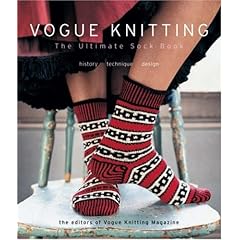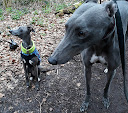Woolly Wormhead is not just about the outside of the head, she explores the inside of our heads too!
Here is some background information on her blog to who she is and what she is about when it comes to textiles, and that is why I love her and respect her. She is far too modest for her own good and so generous with her skills, always has time to explain and doesn't jealously guard her secrets in any way. However, she is often slighted as being 'just a hat' designer, as if she isn't capable of other work too but she strongly defends her choice to work in her current medium, she enjoys it and finds it liberating. You might still persuade her to spin in dog hair again if you are lucky though.
"Reflection of the Arty kind
I've been meaning forever to post some photos from my degree work - I did my main textiles degree at
Goldsmiths, - Fine Art Textiles.
(Prior to that I'd started a Textiles Bsc at Bolton, Industrial Textiles to be precise, but dropped out after the first year due to boredom. It was interesting indeed - learning about formulas for drape of fabric, industrial dyeing processes and so on, but zero creative input or scope)
It was during my time at Goldsmiths that I taught myself to spin, got my first wheel (an Ashford Trad) and got spinning in preparation for work for my final year degree show. I'd previously done some work with human hair, influenced by the artist
Emily Bates who spun and knitted human hair into elongated, disproportionate dresses - they were incredibly daunting to see in the flesh. However, conceptually pet hair held different meanings, and that's what I wanted to explore.

The work I finished for my degree show was an installation comprising of a few related works. The main piece was a 6 foot square patchwork blanket, hand spun from cat and dog hair, that was draped over an armchair. The armchair itself was wired up with speakers - I'd recorded my previous cat Twiggy (who was identical to Minky looks wise yet much more like Spook in personality) purring, put it onto a loop and played it through the speakers. Basically, the whole installation was purring, yet at that level of amplification it closer resembled a deep, murmuring heart beat.

The blanket was at the heart of it all. It took over 6 weeks of solid work to make - spinning every day in my studio, knitting every knit when I got home. I was resourceful in how I collected the hair, and some of it had to be blended (mainly the cat hair) and this was when I first came across
Wingham Wools. To add to the effect of the blanket, I deliberately didn't wash the dog hair - I wanted the smell to be part of it. And it stank! It was beautiful to look at... all those natural colourings and incredibly soft to the touch..... but it needed a repulsive element, and the smell did it.

Alongside this purring dog hair armchair was another piece of work, hanging on the wall. This comprised of 25 dog tags, each engraved with an emotion. Probably the quickest piece of work made! It's message was much more apparent - tags are used to label, identify ourselves, as are our emotions. Regardless of how we deal with our emotions, they make up who we are and how we deal with situations. Comfort, confliction, routine, it was all part of it. The work was intended to gain a different reaction from each viewer, and it did that.

In hindsight, I probably didn't pick the easiest subject to deal with. I'd had a really difficult time during my 2nd year at Goldsmiths - pivoting around the violent attempted rape by the alcoholic ex. It was horrific, and the only thing that got me through it all was my creative work. So, dealing with this issue - well mainly my recovery afterwards - may not have been the best work for a degree show, but it was what I needed to do as a person. Actually, the grades I got for my 3rd year work were the lowest of my whole degree.
But art reflects life, does it not?

Prior to Goldsmiths, after Bolton, I did my foundation course. For those not familiar with the British system, if you want to go to Art college, you are generally required to do a Foundation course, which is a prep year, to help break you out from the constraints of academic studies. Without this Art school can seem like a bit of a culture shock. I did mine at Southend, and this was where I started playing with hair as a sculptural medium. This piece was another exploration, probably into similar meanings as the work above but I may not have been fully aware of it.
Human hair doesn't felt in the same way wool does, yet it mats up a treat, particularly if you throw water into the mix. I built the mould from odd bits of wood, drilled drainage holes and proceeded to make everyone at college coil up in repulsion as I threw bags of hair into water and stuck my hands in! (fear not, I wore rubber gloves) I don't think I have this piece anymore, but it stayed in it's sculpted form without problem. It freaked a lot of people out, they hated it. Yet I found it quite charming... and considered the idea of it as a brick to be rather poignant.
It's interesting looking back on it all.... just goes to show that most of things I create these days are pretty tame by comparism. I've often thought about creating larger pieces of work and exhibiting, but as time goes on I've grown to be more comfortable with expressing myself in smaller ways.
Apologies for the poor image qualities - the originals are safely stored in the loft at my Mum's house in Sheffield; these are scanned from copied images in my portfolio. Do click to get a better view, though. I do still have the blanket, dog tags and the tape of purring... couldn't bear to part with them."

















































